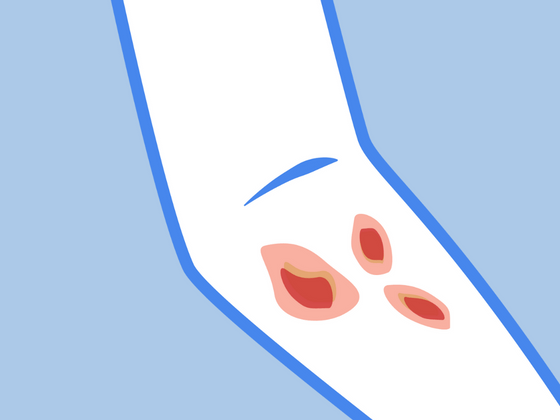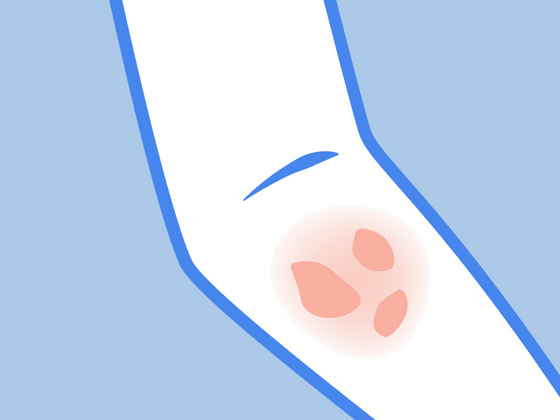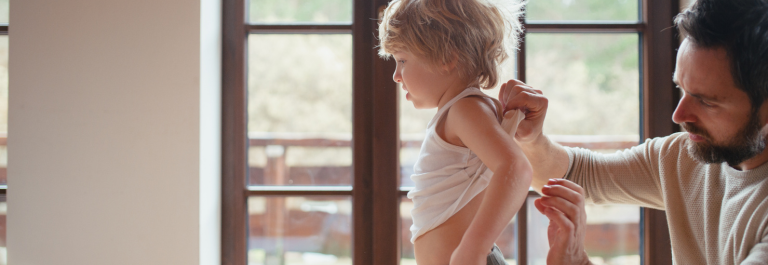Lichenoid dermatitis is a chronic inflammatory skin condition characterized by a rash that resembles lichen - a flat, purple-hued, itchy eruption of raised bumps, often appearing on the wrists, legs, or genital area. It can be difficult to distinguish from other skin disorders, especially lichen planus and similar lichenoid reactions. Though often benign, it can cause significant discomfort and is frequently triggered by underlying health conditions, infections, or allergic reactions to certain drugs.
In this blog, we're going to explore:
-
Common causes and triggers of lichenoid dermatitis
-
Treatment options available, including medications and lifestyle strategies
-
When to seek medical advice and what to expect from a treatment plan
Read on to better understand this skin disorder and how to manage it effectively.
Common Symptoms of Lichenoid Dermatitis
- Itching
- Purple bumps
- Scaly patches
- Thickened skin
- Burning
- White streaks (in mouth)
- Rash
- Discoloration
- Sensitivity
Common Causes and Triggers of Lichenoid Dermatitis
Several different factors can trigger lichenoid dermatitis. While the exact cause isn't always known, here are the most common ones:
1. Reaction to Certain Medications
One of the most common causes is an adverse reaction to medications. This is known as a lichenoid drug eruption. It happens when your immune system overreacts to a drug and attacks your skin.
Medications that may trigger this reaction include:
-
Blood pressure drugs
-
Heart disease medications
-
Proton pump inhibitors (used for acid reflux)
-
Gold salts (used in some arthritis treatments)
If the rash appears after starting a new medication, your doctor may consider this a possible cause.
2. Underlying Health Conditions
Some health conditions are linked to lichenoid dermatitis. These include:
-
Hepatitis C (a viral infection)
-
Graft versus host disease (a complication after a transplant)
-
Autoimmune diseases, where the body attacks its own skin
These conditions can cause the immune system to mistakenly target healthy epidermal cells, leading to inflammation and skin changes.
3. Lichenoid Disorders
Lichenoid dermatitis is part of a broader group of lichenoid disorders. These include:
-
Lichen planus and oral lichen planus – common forms affecting the skin and mouth
-
Benign lichenoid keratosis – often found in older adults
-
Lichen sclerosis – which affects the genital area
These conditions share similar symptoms: raised bumps, a purple hue, itching, and inflammation around sweat glands, hair follicles, and mucous membranes.
Treatment Options for Lichenoid Dermatitis
Treating lichenoid dermatitis focuses on calming the immune system, easing itchy skin, and preventing further inflammation. The right treatment plan depends on the cause, severity, and affected area (such as mucous membranes or the genital area).
While prescription treatments like topical corticosteroids may be used in more persistent or severe cases, many people find relief through a gentler, more natural approach — especially when supported by the right skincare routine.
We offer a range of soothing products designed to support your skin's healing process and reduce irritation caused by lichenoid reactions and similar skin conditions.
Use a Natural Soap
Harsh cleansers, fragrances, and preservatives can strip your skin's natural oils and aggravate the redness, itching, and raised bumps of lichenoid dermatitis. To avoid these common irritants, switch to a truly gentle eczema soap like our Grass Fed Tallow Soap - made with only lye, water, and nutrient-rich grass-fed tallow. Its creamy lather cleanses without drying, soothes inflammation, and helps maintain your skin's protective barrier, making it ideal for sensitive, allergy-prone, or eczema-prone skin.
Monitoring for Adverse Effects of Medications
Some cases of lichenoid dermatitis stem from an adverse reaction to medications (a lichenoid drug eruption). Keep an eye out for new rashes or itching after starting drugs for high blood pressure, heart disease, or acid reflux. Early detection and discussion with your healthcare provider can prevent the reaction from worsening - or spreading to areas like the mucous membranes.
Managing Underlying Health Conditions
Because lichenoid dermatitis can be linked to other health conditions - such as hepatitis C, graft versus host disease, or autoimmune disorders - addressing these root causes is key. Partner with your doctor to manage chronic illnesses, support your immune system, and reduce skin inflammation from the inside out.
Moisturizing to Support Skin Healing
Well-hydrated skin is less prone to flare-ups. After cleansing, apply a rich, fragrance-free moisturizer or eczema cream to restore the skin barrier and keep dryness at bay. After cleansing, apply a rich, fragrance-free moisturizer to restore the skin barrier and keep dryness at bay. We recommend our Nourish + Hydrate Manuka Balm or our beef tallow cream, which delivers deep hydration and calms inflamed, itchy skin - perfect for maintaining overall skin health.
Take the Next Step Toward Calmer Skin
Lichenoid dermatitis is a complex skin condition that infections, drugs, or autoimmune activity may trigger. Understanding its triggers, recognizing its symptoms, and exploring available treatment options with a medical professional can help manage flare-ups and improve quality of life. Don't ignore what your body is telling you - early diagnosis and treatment are essential.










